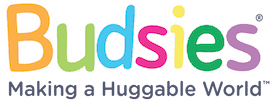Gift-giving, a practice as old as humanity itself, has evolved into a nuanced art that not only reflects cultural norms but also personal emotions and relationships. In the context of students, this practice takes on a unique significance. Have you ever considered how the simple act of giving or receiving a gift can affect a student’s well-being? Let’s dive into this fascinating topic and uncover the layers that make gift-giving a significant contributor to student welfare.
The Psychological Benefits of Gift-Giving to Students
A Sense of Belonging and Appreciation
Imagine a student, perhaps away from home for the first time, receiving a care package from their family. This simple act goes beyond the physical items in the box. It’s a tangible expression of love and support, creating a psychological safety net that is crucial for young adults navigating new challenges. It’s not just about the material gift; it’s about the message it conveys: “You are remembered, you are cared for.”
Boosting Self-Esteem and Motivation
Gifts can also be powerful tools for reinforcement. When students are rewarded for their achievements, it’s not merely a pat on the back. These rewards serve as physical embodiments of their accomplishments, boosting their self-esteem and motivation. Consider a student receiving a new laptop for excelling in their studies; it’s a vote of confidence in their abilities and a motivation to continue striving for excellence.
Interesting Educational Gift
An intriguing gift for a student could be a paid order from the homework helper website, AssignmentBro. This unique resource specializes in aiding students with the completion of essays or catching up on missed homework assignments in college. Such a gift is exceptionally valuable for any student as it provides the twin benefits of time and peace of mind, a precious commodity, especially during end-of-year sessions or various introductory events. The convenience and assistance offered by the online homework helper can be a game-changer in navigating the challenges of academic life, making it a thoughtful and practical gift choice for students.
The Social Dynamics of Gift-Giving Among Students
Building and Strengthening Relationships
Gift-giving among peers can be a subtle yet effective way of building and strengthening social bonds. It’s a non-verbal way of saying, “I value our friendship.” This gesture can be particularly impactful in a student’s life, where forming and maintaining relationships are key aspects of their social development. The act of giving, irrespective of the gift’s monetary value, can forge stronger connections and foster a sense of community.
Promoting Inclusivity and Reducing Social Barriers
Gift-giving can also play a role in breaking down social barriers and promoting inclusivity. When students exchange gifts without the constraints of social hierarchies or financial disparities, it encourages a culture of mutual respect and understanding. It’s a way of celebrating diversity and acknowledging each other’s unique backgrounds and experiences.
The Role of Thoughtfulness in Gift-Giving
Personalization and Emotional Connection
The value of a gift often lies not in its price tag but in the thought behind it. A personalized gift that reflects the recipient’s interests, personality, or needs can have a profound impact on their emotional well-being. It shows that the giver has put time and effort into understanding what would bring joy or utility to the receiver, thereby deepening the emotional connection between them.
The Importance of Timing and Context
Timing and context can significantly enhance the impact of a gift. For instance, a gift given during a stressful exam period can provide much-needed relief and support. Similarly, a congratulatory gift after a significant achievement can amplify the joy and sense of accomplishment. The thoughtfulness in choosing the right moment to give a gift can make all the difference.
The Educational Implications of Gift-Giving
Encouraging Positive Behavior and Academic Achievement
In an educational setting, gift-giving can be strategically used to encourage positive behavior and academic achievement. When teachers and institutions recognize students’ efforts and accomplishments through awards or tokens of appreciation, it not only boosts morale but also fosters a culture of striving for excellence. This practice can motivate students to set higher goals and work diligently towards achieving them.
Enhancing the Learning Environment
Gift-giving can also play a role in enhancing the overall learning environment. Gifts that are educational in nature or that contribute to a better learning experience can have a lasting impact. For example, donating books to a school library or providing students with tools that aid in their studies demonstrates a commitment to their educational journey, contributing to a more enriching and supportive learning atmosphere.
Conclusion
In conclusion, the impact of gift-giving on student well-being is multifaceted and profound. It goes beyond the material aspect, touching on psychological, social, and educational dimensions. Whether it’s through reinforcing achievements, building social bonds, or enhancing the learning environment, the act of giving gifts plays a crucial role in shaping a student’s overall experience and well-being. So, the next time you consider giving a gift to a student, remember that you’re not just giving an item; you’re contributing to their personal growth, happiness, and success.



